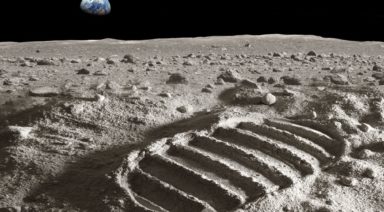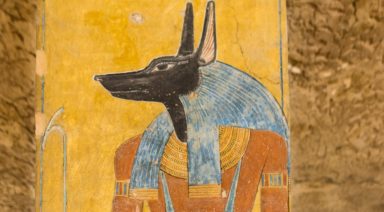David Adair Says He Designed Fusion Rocket Engine Like One Found at Area 51

Before he was a teenager, David Adair was fascinated with jet propulsion. By the time he was 11 he had built his first rocket, and at the age of 17 he supposedly pioneered a new type of engine that used neither liquid nor solid jet fuel – it used electromagnetic fusion. From that point on, he says he caught the eye of government agents, but not just any agents… top brass, Area 51-clearance-level agents.
Who is David Adair?
Adair was a child prodigy when it came to astrophysics and rocket science, voraciously reading through all of the relevant literature he could find at his local library. According to his story, when a local librarian noticed he was correcting the flawed data in astrophysics texts, she was amazed and ordered him hundreds more.
Adair became enamored with space travel, designing rocket propulsion systems with cryogenic fluids. Eventually this led to his creation of a new type of system that had never before been created, the electromagnetic fusion containment engine. With this engine, he says, his rocket could propel from zero to 8,654 mph in just over four seconds.
Adair was awarded “Most Outstanding in the Field of Engineering” by the U.S. Air Force and was featured in local papers. He says that, upon receiving that award, he started accepting federal funding from the Department of Education’s National Science Foundation, thanks to Congressman John Ashbrook.
At this point, his mother became intimidated by the amount of attention he was receiving from different military agencies, until she was assuaged by General Curtis LeMay, who would inevitably prove to be a fortuitous relationship for Adair. Several years later, he says he was recruited by the Navy to design mechanisms for changing jet turbine engines.
But after his rocket design at the age of 17, Adair says he was brought to White Sands Missile Testing Facility in southern New Mexico to test launch his rocket. He was told to launch it at a dried-up lake bed of specific coordinates in Nevada. That lake bed, known as Groom Lake, happened to be at an undisclosed military base, now known as Area 51. Adair’s launch went off without a hitch, landing at the Nevada test site with parachutes deployed and ready to be reused and launched almost immediately, according to him – Elon Musk would have been jealous.

Adair claims he was then flown directly to the Groom Lake base, where he was met by black-suited, government agents and shown to an underground facility where a rocket engine of similar nature was kept. The rocket was unlike anything he had ever seen and appeared to be punctured. He said he wondered why the Air Force was asking him to repair an engine they had designed, which was far superior to his own.
But upon further inspection, he quickly understood it to be of alien origin and claims that it was actually a living organism that could only be controlled telepathically. When he started asking questions, the government agents knew that he was not as naïve as they assumed.
A Sinister Intent
Adair claims that one of the agents he met at Area 51 was the infamous, former Nazi rocket scientist Arthur Rudolph. He also notes that there was an intention to use his rocket as a tool for implementing a first strike, during the Cold War. Also involved in this military conspiracy was General LeMay, who had helped Adair attain the funding to build his rocket.
He was known as a war monger with an incredibly hawkish military strategy. He believed in the idea that, in nuclear warfare, a successful strike would have to be capable of killing an entire nation, otherwise there would be mutually assured destruction. LeMay built out the Strategic Air Command program so that it would be capable of dropping 80 percent of its arsenal at once.
To avoid mutually assured destruction, the military needed first strike capability. So, according to Adair, LeMay was interested in the incredible speed that could be achieved by his fusion-contained propulsion system.
Adair says that upon realizing the military’s intent, he had to somehow sabotage his rocket so that it couldn’t be used as a vehicle for a nuclear warhead. Thinking quickly on his feet and using some cunning ingenuity, Adair says he collected graphite grease to cause a chemical reaction with deuterium, an isotope necessary for fusion reactions that was contained in the rocket’s inner workings.
This tactic worked, setting off a massive explosion. According to Adair, this upset Rudolph, who threatened to imprison him at the base for the rest of his life, forcing him to remain there and continue working, while telling his family that he had died in a horrible accident. General LeMay came to his rescue however, and allowed him to return home. Adair said that Rudolph had very little authority due to his Nazi history.

There are plenty of pictures and newspaper articles seeming to corroborate Adair’s achievements and awards from the Air Force, but why hasn’t he continued to develop this technology? He supposedly headed a company that developed similar technologies under the name Intersect, Inc., but the company is now either defunct or wiped from the internet.
His current website is devoted to telling this story and includes photographic evidence that seems to substantiate his history of being involved in aeronautics programs and military enrollment. He also has documentation of his correspondence with Congress, regarding the acquisition of an old Titan rocket, although it doesn’t say whether he was granted its use or not. Adair has also mentioned that he attempted, at one point, to testify before Congress regarding his Area 51 experience.
Stories from whistleblowers and those who claim to have been granted access to Area 51 are often bizarre, outlandish and unbelievable, so what, if anything, can be derived from this story and others like it? While the validity of Adair’s story remains in the realm of debate, it can be assumed that if there is any truth behind it, the government would likely try to distort or cover-up anything it wants to keep classified.
Secret Space Programs and Breakaway Civilizations

In July 2014, on the 45th anniversary of Apollo 11’s moon landing, the government declassified information about a secret space program from the 1950s called Project Horizon. The plan outlined the building of a permanent military base on the moon. Ten to twenty men would be sent with all their supplies and nuclear weapons. The secret moon base would be used for surveillance against and protection from the Soviet Union, and the men would have constant communication with the Earth.
The released documents show that the scientists knew it wasn’t possible to implement the plan, but it was expected to be put in place as technology advanced. Project Horizon never got off the ground. But, that isn’t the end nor the beginning of the story about secret space programs from the past, present and the future.
Secret Space Programs and FDR
In the 1940s, according to recently released documents, President Franklin Delano Roosevelt commissioned a secret space program. He was concerned about how to move large numbers of people in case of nuclear war to avoid massive radiation damage. He thought there might also be a need to escape the ravages of some other global cataclysmic event. Since there was no place on Earth to which large masses of people could be moved, he considered the possibility of moving to locations in space.
At first, moving to the nearest star, Alpha Centauri, seemed like an option. However, the distance made such a plan impossible. As a next step, FDR focused on the moon, Mars or Venus as alternatives to Earth.
Beginning in 1945 at the conclusion of WWII, after President Truman took over, he brought 1,500 German scientists and engineers to the U.S. The scientists, under Hitler’s leadership in Nazi Germany, made advancements in the development of flying saucers, like the Nazi Bell, before and during the war. The German scientists worked at Fort Bliss, near El Paso, Texas, and were assigned the task of developing secret space programs under the project name of Operation Paperclip.
Truman believed the Germans had knowledge of anti-gravity propulsion engines and other spacecraft flight technology. Werner von Braun was the most well-known member of this group, who eventually became the designer of the Saturn V launch vehicle, which was used to propel American astronauts to the moon. He eventually became the director of NASA’s Marshall Space Flight Center and spoke out frequently about the need for space exploration.
Secret space programs are believed to be financed by secret “Black Budget” programs with contributions made by people with great wealth, private contractors and some government agencies. This secret funding keeps the programs from being subject to congressional oversight. Since the early 1960s, the programs have been kept secret even from the president: A memo was found in the newly released documents that said to keep “Lancer,” President Kennedy’s secret service nickname, out of the loop.
Secret Space Programs and Breakaway Civilizations
Secret space programs may have developed Breakaway Civilizations in outer space. Well-respected UFO and space researcher Richard Dolan, defines a Breakaway Civilization as a secret group of technologically advanced people who don’t share their knowledge with the rest of the world. These are essentially the Earth’s elite who have knowledge far above the rest of the world.
These elite may know of an upcoming imminent global geological cataclysm event and are building space bases as shelters for themselves. For example, they could be planning their escape from Nibiru Planet X, which “triggers comet showers” every 27 million years. One of those comets is expected to crash into the Earth and totally destroy it sometime in the not too distant future.
Scotland native, Gary McKinnon, hacked into thousands of government secret files. He found evidence of an anti-gravity propulsion system that traveled at incredible speeds. Also, he found evidence of portal technology that, when coupled with anti-gravity propulsion, would allow space travel to other stars and planets to be accomplished in a short amount of time.
It appears that Einstein’s theory that nothing can travel faster than the speed of light has been debunked. It also appears the Black Budget keeps these secrets even from NASA, since NASA apparently does not have access to anti-gravity technology. It still propels its rockets with fossil fuel.
McKinnon claims he saw nearly 300 photos of structures and civilizations existing on the back side of the moon. He says these structures (alien bases on the moon) are erased out of any photos when they are released to the public. Unfortunately, when he hacked into the computers, he was using a dial-up connection so he couldn’t download the photos. He says he took a screenshot of one that was saved on his computer, but his computer was seized when he was arrested. When his computer was subsequently returned to him, the photo was gone.
McKinnon also reported viewing a file that included names of “non-terrestrial officers” who he says were assigned to ships that weren’t U.S. Navy ships. He concluded these were the officers assigned to space ships, not navy ships, indicating that Breakaway Civilizations already exist.
There are many outstanding questions about secret space programs. Why do these programs remain secret? Will there be an opportunity for non-elite citizens to be part of a Breakaway Civilization? A poll taken in 2015 shows that 54 percent of Americans believe extraterrestrial intelligence exists. With such a large number of people supporting alien existence, why is there still a need to maintain secrecy?
Want more like this article?
Don’t miss Deep Space on Gaia for more on the long and hidden history of Earth’s secret space program.




































